Content
An electric blower is a device designed for harvesting leaves and other debris in garden plots or adjacent areas. Its distinctive features are compactness, ease of management and affordable cost.
The garden vacuum cleaner has several operating modes. The simplest devices provide only airflow. When choosing a model, you need to pay attention to its technical characteristics (power, performance, weight).
Scope of application
An electric blower is a multifunctional device capable of solving a wide range of tasks:
- used for cleaning leaves, branches, debris and dust;
- in winter, the area can be cleared of dry snow;
- drying of special machinery and various equipment;
- cleaning production sites from dust, shavings and sawdust;
- purging computers, system units;
- crushing foliage for further disposal or mulching the soil.
Principle of operation
Electric blowers work like a vacuum cleaner. They need access to the electrical network to work. Therefore, they are most often used in small backyard areas.
When the blower is turned on, the impeller rotates due to the motor, which injects air flows. Mains powered blowers weigh between 1.3 and 1.8 kg. The flow rate and volume of the blown air are sufficient for cleaning the area.
Electric garden vacuum blowers operate in several modes depending on the model:
- air injection from the pipe, which allows you to clean the area from leaves and various debris;
- a vacuum cleaner for collecting garbage in a bag;
- a shredder for the subsequent processing of natural waste.
The main blowers allow you to blow air out of a pipe or collect debris. The shredder is a fairly new feature, but it will prove useful in the home garden.
Shredded leaves and twigs take up less space, making them easier to recycle later. However, the recycled material can be used as a mulch layer in the garden beds. Flowers and shrubs tolerate winter frosts better under such a layer.
Advantages and disadvantages
Electric garden vacuum cleaners have a number of undeniable advantages:
- do not harm the environment;
- have compact dimensions and low weight;
- are distinguished by a reduced level of noise and vibration;
- safe to use;
- are easy to manage;
- start quickly at any temperature;
- do not require special maintenance.
At the same time, devices of an electric type have a number of disadvantages:
- you need access to a network with constant voltage;
- when buying, the length of the cord is taken into account, which makes it possible to ensure the processing of the entire site;
- periodically you need to take breaks from work to avoid overheating of the device (every 30 minutes).
Specifications
When choosing a blower, consider the following technical characteristics:
Power
Power ratings of electric blowers range from 0.5 to 4 kW. As the power increases, the performance of the device increases. For domestic use, a blower with a power of no more than 1 kW is sufficient.
Air flow volume
This indicator is measured in m3/ min and characterizes the volume of air entering their blower. Its average value is from 500 to 900 m3/ min.
The volume of air flow is of particular importance when operating in suction mode. When productivity is low, the devices cope with cleaning small areas.
Blowing speed
When using blowing mode, the blowing speed matters. At high speeds, the speed of cleaning depends. This indicator is measured in meters in seconds.
For household appliances, the blowing speed is about 70-80 m / s. There are models with higher rates, but these values are sufficient to eliminate grass, leaves and cones.
Collection volume
This indicator is available for equipment operating on the principle of a vacuum cleaner. The larger the bin, the less often it will need to be emptied.
For cleaning a wide area, it is better to choose a model with a large collection. On sale you can find blowers with a collection volume of up to 45 liters.
Mulching ratio
For blowers with a function for shredding plant debris, the mulching factor must be indicated. This indicator characterizes how much the volume of waste is reduced after processing (for example, 1:10).
Main varieties
Depending on the version, garden vacuum cleaners are divided into several types:
Manual
Such devices are lightweight and compact. The power and performance of hand blowers is low, so they are used for treating small areas.
More powerful models are equipped with shoulder straps, which simplifies the process of working with the device. Handheld devices contain a comfortable grip that is usually rubberized and non-slip in the hand.
Wheeled
Wheel type garden vacuum cleaners have higher power and good performance. They allow you to treat areas over a long period of time. Such devices are used in parks or lawns.
The wheel blower works most efficiently in large areas that are characterized by flat terrain. If it is necessary to remove garbage in hard-to-reach places (narrow passages, areas between trees), then using such equipment is rather inconvenient.
Rating of the best devices
The rating of the most popular blowers is as follows:
Bosch ALS 25
The universal device for cleaning the adjoining area. The device has the functions of blowing, suction and processing.
Electric garden vacuum cleaner ALS 25 has the following characteristics:
- power 2.5 kW;
- the highest flow rate - 83.3 m / s;
- maximum air volume - 800 m3/ h;
- weight - 4.4 kg;
- the presence of a garbage container with a volume of 45 liters.
Bosch ALS 25 allows you to adjust the suction speed. A shoulder strap is provided for ease of use.
Stihl BGE 71
Silent electric blower is suitable for removing foliage or grass. An additional kit is provided for retrofitting the device and operating in vacuum cleaner mode. The technical parameters of the Stihl BGE 71 are as follows:
- flow speed - 66 m / s;
- air consumption - 670 m3/ h;
- weight - 3 kg.
The controls are integrated into the handle. Safety glasses are included as standard.
MTD BV 2500 E
The MTD BV 2500 E electric blower operates in three modes: blowing, suction and recycling. The suction pipe is equipped with casters, making it easy to move the device.
Blower features are as follows:
- power - 2.5 kW;
- air volume - up to 900 m3/ h;
- air speed - 75 m / s;
- garbage container capacity - 45 l;
- grinding ratio 1:10;
- weight - 3.9 kg;
- comfortable curved handle.
Champion EB2718
A compact device with good performance in a small size. The unit is capable of blowing and suction, as well as crushing debris.
Champion EB2718 has the following characteristics:
- air volume - 720 m3/ h;
- flow speed - 75 m / s;
- weight - 3.2 kg;
- garbage container with a volume of 27 liters.
Worx WG501E
Powerful garden vacuum cleaner for collecting leaves, capable of blowing, sucking and processing plant material. The operating mode is selected using a lever.
Worx WG501E has the following characteristics:
- power - 3 kW;
- air volume - 600 m3/ h;
- crushing ratio - 1:10;
- seven types of speed;
- waste bin with a volume of 54 liters.
User reviews
Conclusion
The electric blower is a handy unit capable of clearing small areas of leaves and other debris. It is also used for clearing snow, cleaning elements of computers and other equipment.
The garden vacuum cleaner requires network access to operate. Such devices are quiet and environmentally friendly. When choosing a specific model, take into account its power, performance, weight and the presence of built-in functions. Manufacturers offer blowers with different ratings, which allows you to choose the best option for your needs.
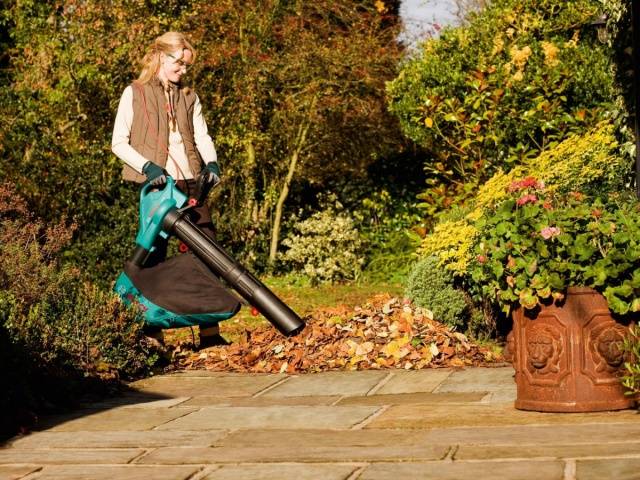
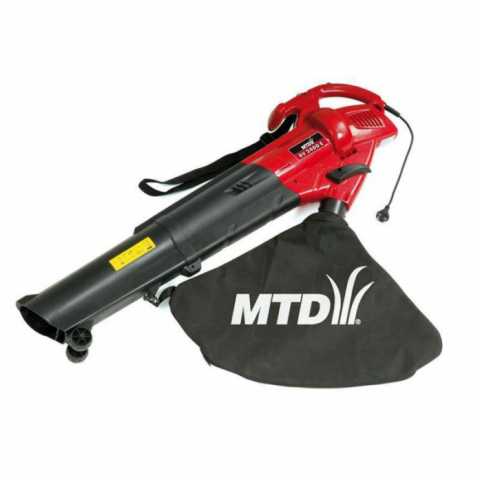
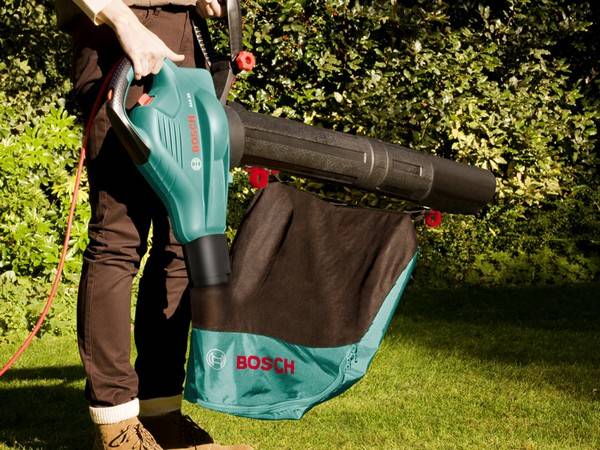
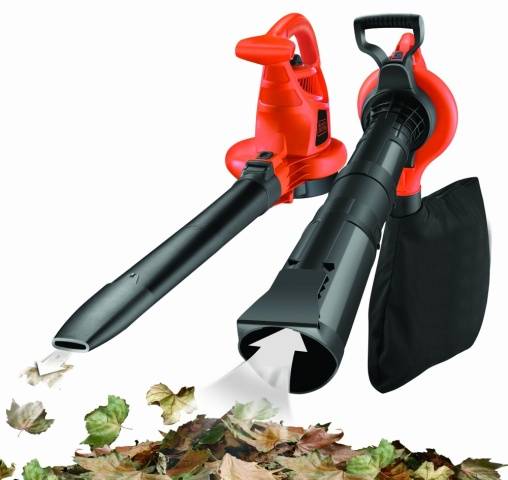
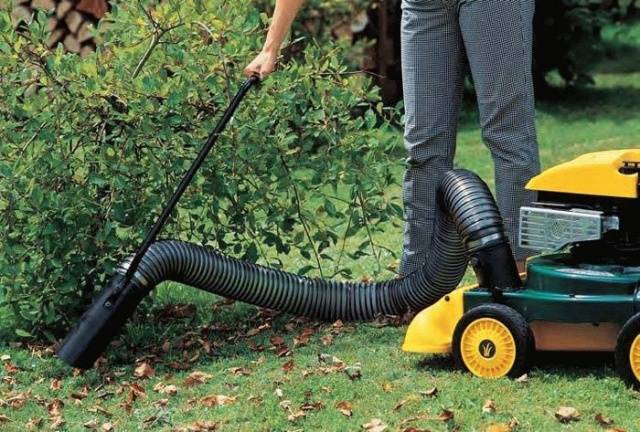

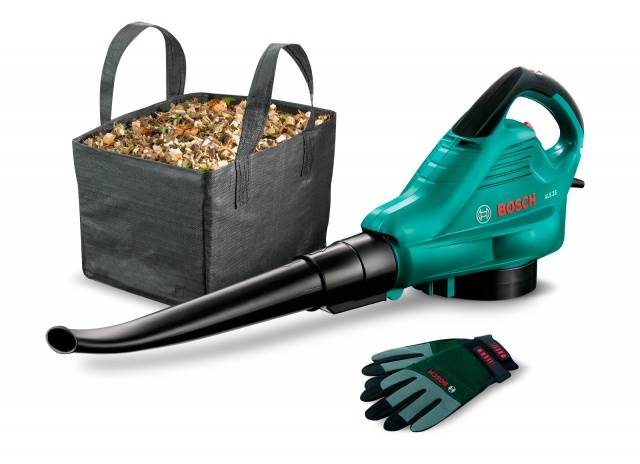
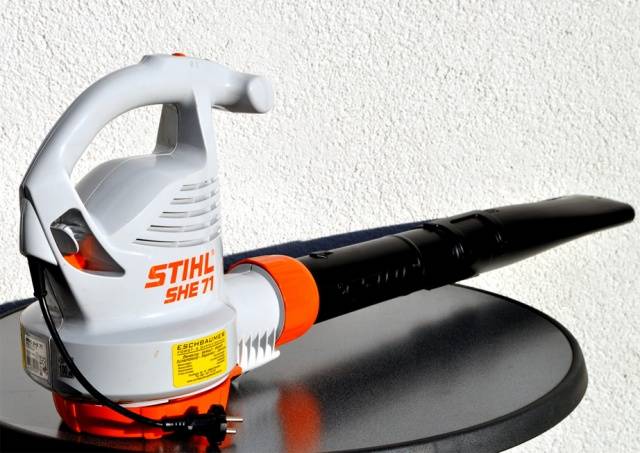
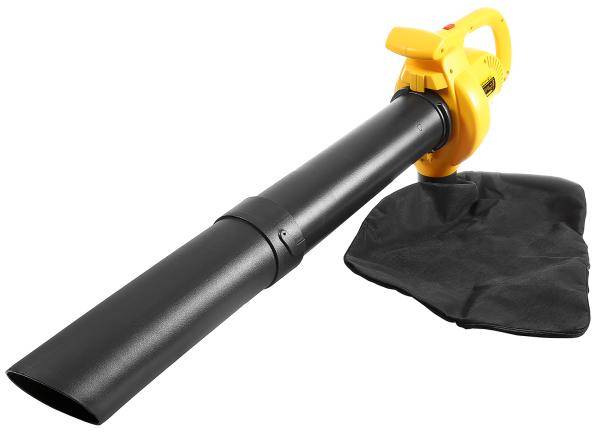





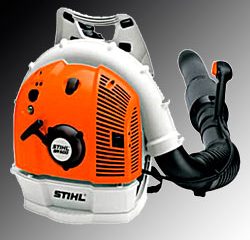
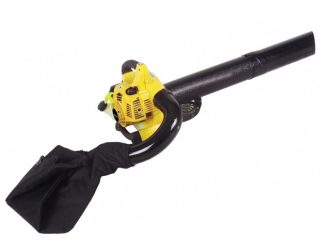

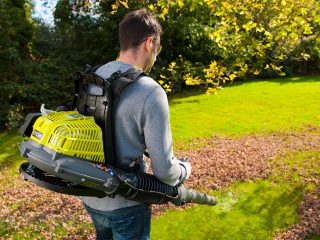
I have a Stihl BGE 71 in the back room, a very handy piece. It sucks well both inward and outward, I remove the leaves from the veranda and the needles from the pine tree that grows near the house, I also clean the car in suction mode. I recommend, the seller advised me first of all, said it will last a long time and now it's gone for 3 years, not a single problem with him, I'm happy